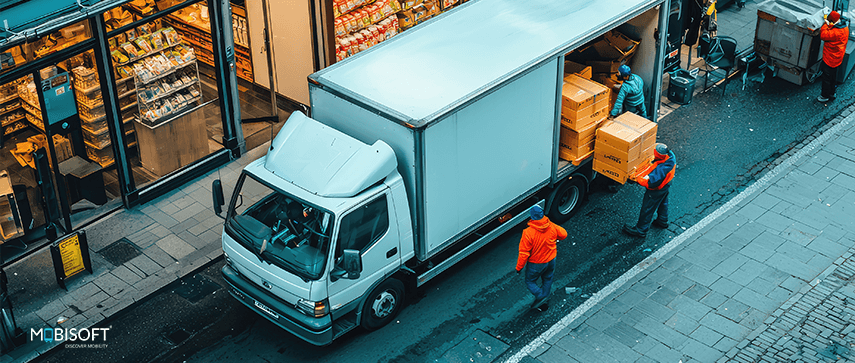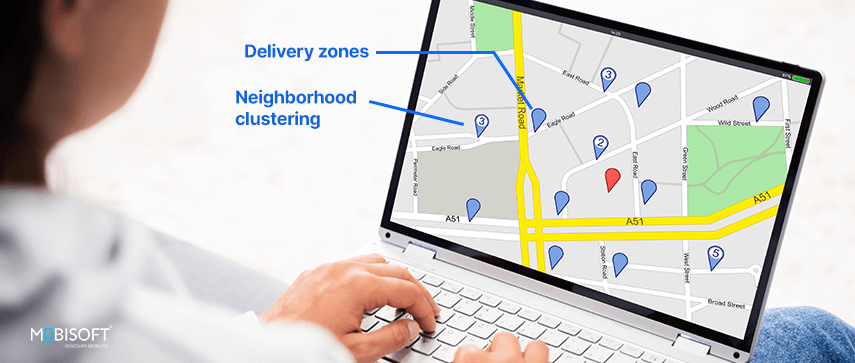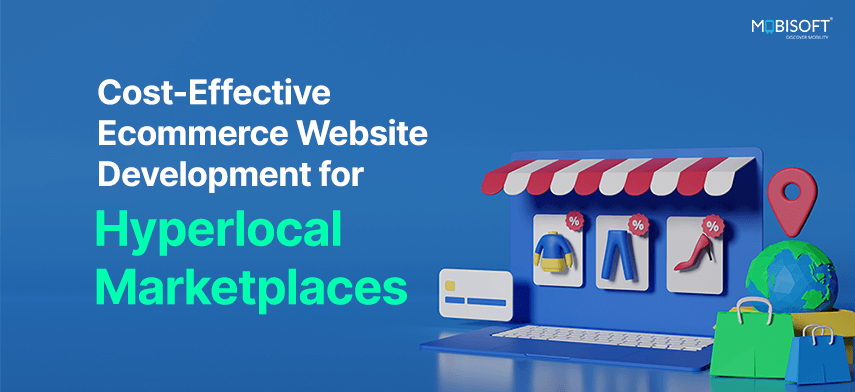In today's fast moving digital economy, consumers expect convenience, speed, and relevance. They want services delivered not just to their city but to their doorstep, sometimes within minutes. This demand has given rise to a powerful business model: hyperlocal ecommerce.
It’s not just a trend, it’s a revolution that is reshaping how brands connect with communities, build loyalty, and stay competitive in an increasingly localized world. In this shift, businesses leveraging hyperlocal ecommerce solutions are now offering unmatched convenience and community driven service.
What Is Hyperlocal Commerce?

Hyperlocal commerce is all about proximity. It connects local businesses with nearby customers through digital platforms. The goal? Deliver products and services quickly, often within a few hours, by tapping into local delivery services and neighborhood resources.
Key characteristics include:
- Small area focus: Targets neighborhoods, streets, or specific zones.
- Real time fulfillment: Uses live tracking and inventory data.
- Community centric: Partners with local vendors and delivery agents.
- Personalized experience: Offers are tailored based on local preferences.
Whether it’s a cup of coffee, fresh groceries, or handyman services, hyperlocal ecommerce ensures people get what they need from businesses around the corner, not across the country.

Why Hyperlocal Commerce Matters
For Consumers
- Fast Delivery: Groceries, medicines, and meals arrive in minutes, not days.
- Personalized Experience: Recommendations and services reflect local tastes.
- Unique Products: Access to specialty or artisanal items not available in big box stores.
- Support Local: Each order helps small businesses thrive.
For Businesses
- Targeted Customers: Engage people who are close and ready to buy.
- Lower Costs: Reduced delivery range cuts down on logistics expenses.
- Stronger Loyalty: Local touch builds deeper, lasting customer relationships.
- Competitive Edge: Even small stores can compete with e-commerce giants by offering local relevance.
Retail chains can take cues from proven digital commerce for retail chains to adapt and scale faster in local markets.
Key Features and Technology Enablers
Hyperlocal ecommerce relies heavily on digital infrastructure and data insights. These are the core enablers:
- Geo targeting: Pinpoints where customers are in real time.
- Live Order Tracking: Transparency from checkout to doorstep.
- Vendor Integration: Multiple sellers collaborate through one platform.
- Optimized Delivery: Micro logistics ensures fast, efficient fulfillment.
- Language Localization: Regional language support enhances usability.
- AI Personalization: Data driven insights power relevant offers.
- Mobile First UX: Easy shopping on the go, from phones or voice assistants.
To implement these capabilities effectively, your platform should include key ecommerce platform features that enable seamless integration with hyperlocal tools.
Hyperlocal Commerce vs. Traditional E-Commerce
| Feature | Traditional E-Commerce | Hyperlocal Commerce |
| Focus | Global/National | Local Neighborhood |
| Delivery | 1–5 days | Under 2 hours |
| Inventory | Central warehouses | Nearby vendors |
| Personalization | Generic | Location-based |
| Community Impact | Minimal | Strong local support |
| Customer Relationship | Transactional | Community-driven |
Hyperlocal commerce is faster, more personal, and deeply embedded in neighborhood commerce and community based e-commerce ecosystems.
Consumer Behavior and Market Trends
Who’s Using It?
- Young Adults (18–44): They crave speed, variety, and convenience.
- Busy Families: Daily essentials delivered on time save hours.
- Local Loyalists: Prefer to support small, neighborhood businesses.
What Are They Buying?
- Food Delivery: 52%
- Groceries: 38%
- Home Services: 32%
- Logistics: 40%
- E-Pharmacy Items: 26%
Why Do They Choose Hyperlocal?
- Speed: 33% want instant service.
- Unique Finds: 27% seek local specialties.
- Easy Returns: 26% enjoy hassle free exchanges.
- Affordability: 26% appreciate cost effective solutions.
More than half of hyperlocal platform users make purchases weekly, many use them multiple times a week.
Strategies for Hyperlocal Success
Partner with Local Vendors
Collaborate with nearby retailers and service providers. Offer customers a wide range of trusted, familiar brands.
Run Geo Targeted Campaigns
Use GPS based advertising and mobile push notifications. Engage customers as they move through your area.
Enable Real Time Inventory
Keep your stock data live. Avoid order cancellations and disappointments.
Optimize for Hyperlocal SEO
Target terms like “salon near Koramangala” or “pet food in Brooklyn Heights.” These keywords attract high intent traffic.
Make Mobile and Voice Search a Priority
Local searches often happen via mobile or smart speakers. Your site must load fast and speak clearly to these platforms.
Engage With the Community
Sponsor local events. Share local stories. Show that your business is a part of the neighborhood, not just present in it.
Consistency across digital and physical touchpoints also contributes to higher trust and conversions, which is where a strong omnichannel retail strategy becomes essential.
Hyperlocal SEO and Content Marketing

Why Does It Work?
Hyperlocal SEO helps your business show up in searches made by people right near your location. It increases visibility and brings in motivated buyers.
Key Tactics
- Use Hyperlocal Keywords: Include local landmarks, street names, and neighborhood tags.
- Optimize Google Business Profile: Keep your contact info, hours, and photos updated.
- Publish Local Content: Write blogs about events, seasonal offers, or “best of” guides.
- Build Local Backlinks: Collaborate with community blogs and news sites.
- Mobile Friendly Design: Ensure your site works beautifully on phones.
Content Ideas
- Stories from happy local customers
- Guides to events and hidden gems nearby
- Lists like “Top 5 vegan cafes in [area]”
- Photos and videos shared by real users
Top Platforms Supporting Hyperlocal Commerce
| Platform | Notable Features |
| Sekel Tech | Geo fenced ads, inventory sync, customer segmentation |
| Swiggy Instamart | 10 minute grocery delivery, real time updates |
| Blinkit | Instant delivery of daily essentials |
| Dunzo Daily | Subscription plans, curated local products |
| Fynd | Analytics, real time inventory, store integration |
| Shopify & WooCommerce | Plugin support for local SEO and delivery |
| BigBasket | Extensive selection, reliable scheduling |
These tools help businesses modernize and scale their hyperlocal ecommerce strategy without losing the human touch. For those seeking more tailored options, the best custom ecommerce platforms for small businesses can offer flexibility and scalability to meet unique hyperlocal needs.
Challenges and Solutions
| Challenge | Solution |
| Managing fast delivery and stock | Invest in smart inventory tools and partner with reliable local logistics providers |
| Competing in a crowded local space | Use hyperlocal SEO and authentic content to stand out |
| Building trust and loyalty | Highlight local reviews, share behind the scenes stories |
| Respecting customer privacy | Be transparent with data usage and give customers control |
Real World Examples
- Urban Grocery: Blinkit and Swiggy Instamart offer 10 to 15 minute deliveries by leveraging neighborhood dark stores and real time order routing.
- Local Retail SEO: A bakery near Andheri increased walk ins by 30% by optimizing its Google Business Profile and running local ads.
- Community Engagement: Small brands sponsoring school events or neighborhood cleanups saw more customer loyalty and social media shares.
FAQs: Hyperlocal Commerce
Q: What types of businesses benefit most?
A: Grocery stores, restaurants, salons, pharmacies, and home services providers gain the most from hyperlocal ecommerce and neighborhood delivery apps.
Q: How is it different from regular e-commerce?
A: It focuses on fast delivery and hyper personalized experiences within small geographic areas.
Q: What tech powers hyperlocal commerce?
A: GPS tracking, live inventory management, mobile first UX, and AI based personalization.
Q: How do I begin with hyperlocal SEO?
A: Start by claiming your Google Business Profile, using street specific keywords, and publishing locally relevant content.

Conclusion: The Future Is Local
Hyperlocal commerce is not just about delivering goods, it’s about delivering trust, relevance, and community connection. As a result, businesses are embracing cost effective ecommerce website development tailored for local markets and markets will become deeply rooted in their neighborhoods.
For established retailers looking to upgrade or expand, explore purpose built ecommerce solutions for retailers to meet hyperlocal demand with precision and scale.
Final Takeaways:
- Hyperlocal commerce brings speed, personalization, and authenticity.
- Technology and local partnerships are crucial for success.
- SEO and content marketing drive visibility and loyalty.
- The time to act is now, before your competitors claim your neighborhood.
Take Action Now
Is your business ready to go hyperlocal?
Contact Mobisoft Infotech to explore custom solutions for location based commerce.
Discover how our AI powered platforms can help you attract, engage, and serve your local audience better than ever.
Hyperlocal commerce is not just delivering products, it’s delivering value to your community.
References
- Sekel Tech: Mastering hyperlocal business SEO strategies
- WATConsult: Digital Commerce Report on Hyperlocal Behavior
- Myra Tech Labs: What is hyperlocal eCommerce?
- Fynd: Hyperlocal marketplace tools and trends
- SingleInterface: Crafting stories for hyperlocal content marketing
- Appringer: Hyperlocal SEO best practices
- Konstruct Digital: Neighborhood specific keyword strategies





 May 29, 2025
May 29, 2025


